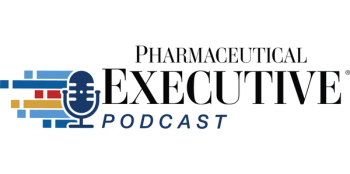- Pharmaceutical Executive: October 2025
- Volume 45
- Issue 8
From Advantage to Essential: How Daily Data & AI Alerts Transform Commercial Functions
Key Takeaways
- Advanced analytics have become essential in the life sciences sector, transforming commercial strategies and decision-making processes.
- Daily business rule alerts and predictive analytics complement each other, enhancing targeting and engagement strategies in healthcare.
The importance for pharma in recognizing integrated data sources as necessary infrastructure—not just a competitive edge.
The commercial life sciences landscape has reached a decisive threshold. Organizations that once viewed advanced analytics as a nice-to-have enhancement now recognize daily data processing and intelligent alert systems as fundamental requirements for commercial success. What began as experimental implementations that offered competitive advantages have rapidly evolved into an operational imperative.
This transformation reflects a deeper shift in how healthcare decisions unfold. Claims data demonstrates that healthcare providers (HCPs) make critical treatment decisions within days, sometimes weeks, following a diagnosis or test results. In this accelerated environment, traditional weekly or monthly reporting cycles create blind spots where commercial teams might miss optimal windows for actionable engagement.
The solution lies not in choosing between business rules-based alerts or modeling-based alerts.
Instead, it’s about understanding how daily business rule alerts and predictive analytics work together to create comprehensive commercial intelligence that drives more effective targeting and engagement strategies. Each serves distinct but complementary functions in the modern pharmaceutical and healthcare commercial environments.
Understanding the dual-alert approach
First, it’s essential to understand how rules and modeling-based alerts differ.
Daily business rule alerts operate on immediately actionable medical events. These include changes in patient compliance, lab data that indicates disease progression, or diagnosis events that signal treatment decisions.
Predictive analytics identifies future opportunities before they manifest in claims or lab data. This approach can discover which HCPs will likely encounter eligible patients and enable proactive educational outreach and relationship building. The predictive approach proves especially valuable in rare disease scenarios, where patient populations remain small and timing becomes critical.
Strategic value emerges when organizations combine both methodologies.
Daily notifications enable rapid response to immediate opportunities, while predictive analytics establishes the groundwork for future engagement. This dual system ensures commercial teams maintain both reactive agility and proactive positioning.
Implementation strategies across functions
Organizations can integrate these notification systems through several channels, each serving different operational needs and organizational structures.
Direct sales force integration represents the most straightforward implementation. Representatives receive targeted notifications that identify specific HCPs with patients experiencing relevant clinical events.
This approach works particularly well for daily business rule notifications, where timing sensitivity demands immediate action. However, success depends heavily on the organization’s agility. Companies that employ dynamic targeting strategies rather than static territory assignments demonstrate significantly better response rates from engaged HCPs.
Clinical evidence-based outreach offers a more structured approach and is particularly effective for predictive intelligence. For example, this strategy enables medical affairs teams to deliver educational content precisely when HCPs anticipate eligible patients, without requiring immediate sales force deployment. This approach proves especially valuable in complex therapeutic areas that require substantial clinical education prior to prescribing.
Advanced organizations increasingly incorporate both notification types into comprehensive next-best action engines. These engines evaluate email engagement rates, promotional response metrics, and detailed session outcomes, along with predictions of clinical opportunities. The notification systems provide one additional layer of intelligence to help these engines make more informed decisions about targeting across all commercial channels.
Infrastructure requirements and competitive differentiation
Alert systems, also known as trigger-based systems, provide a critical advantage over raw data delivery approaches by reducing demand on infrastructure. Traditional data analytics require organizations to ingest, warehouse, and manipulate massive data sets before generating insights.
Daily notifications and predictive systems deliver summarized insights on the HCP level that commercial teams can immediately act upon.
This streamlined approach eliminates complex data manipulation requirements and enables sales representatives to receive actionable information through simple emails or mobile applications. This efficiency extends beyond technical simplification to workflow integrations, eliminating the need for field teams to learn complex analytical tools or interpret raw claims data.
However, effective notification systems require sophisticated business rule development and multisource data integration capabilities. This requires organizations to work with service partners who can construct complex targeting logic across prescription and medical claims data and lab data.
The breadth of data sources becomes particularly important for rare diseases, market access scenarios, and complex treatment protocols that require coordination across multiple HCP types. Organizations relying on single-source notification systems consistently underperform those with comprehensive data integration capabilities.
Measurable impact andcommercial outcomes
Case studies further validate these outcomes.1 Daily notification systems supporting the launch of a novel antipsychotic reduced lead-to-engagement time for sales representatives from five weeks to 48 hours. This enabled early adopters to be identified during the crucial launch period.² This acceleration proves especially valuable during product launches where timing determines market positioning success.
These systems generate broader commercial value through improved resource allocation and strategic positioning, which goes beyond their impact on prescriptions. Predictive intelligence enables commercial teams to prioritize those HCPs most likely to encounter relevant patients to optimize both personal and nonpersonal promotional investments.
Alert systems facilitate more timely therapeutic interventions. Daily alerts help identify those patients who are experiencing challenges with access and enable a rapid resolution before prescriptions are abandoned. Predictive systems facilitate proactive discussions of next-line treatment options by identifying those patients who are likely to progress.
Scaling considerations across therapeutic areas, product lifecycles
Alert strategies vary significantly across therapies and product maturity stages. Rare disease markets typically benefit the most from predictive analytics, given their limited patient populations and the importance of establishing provider relationships before clinical events. Competitive therapeutic areas favor daily business rule alerts that enable a rapid response to immediate opportunities.
Product lifecycle considerations add strategic complexity. New therapies that target early-line treatment benefit from alerts that identify newly diagnosed patients.
Products intended for later-line therapy require alerts that detect treatment progression or therapy failure signals. Mature products approaching patent expiration need alerts that identify switching opportunities or adherence support needs.
Managing implementation challenges andchange adoption
Companies frequently struggle with alert prioritization when multiple targeting criteria compete for attention.
The abundance of potential trigger sources creates analysis paralysis, where teams are unable to distinguish high-value opportunities from routine clinical events.
Accordingly, successful implementation requires transparent model interpretation and clear demonstration of value. Sales forces often resist algorithmic targeting due to “black box” concerns, where end users can’t assess a system’s internal logic and decision-making processes. By partnering with transparent service providers, companies can overcome adoption barriers by showcasing alert logic and demonstrating ROI metrics.
Change management becomes critical when integrating predictive analytics, as field teams must trust algorithmic recommendations over traditional volume-based targeting. Training programs emphasizing alert accuracy and conversion rates help build confidence in data-driven strategies and tactics.
The evolution toward comprehensive commercial intelligence
The next phase of evolution will likely integrate alert systems with emerging agentic artificial intelligence (AI) capabilities and create more sophisticated and autonomous intelligence platforms. Companies should evaluate potential partners based on their experience in this evolving landscape.
Gone are the days when single data sources could meet comprehensive targeting needs or static targeting methods could suffice in many crowded therapeutic areas and rare diseases. Tomorrow’s commercial success will depend on seamlessly combining multiple data streams, notification types, and cutting-edge AI/machine learning approaches into unified commercial strategies that serve patients, providers, and business objectives simultaneously. The future belongs to pharmaceutical companies that recognize integrated data sources as essential infrastructure and not just a competitive advantage.
Mercury Williams is Principal, Patient Analytics and AI, Global Commercial Solutions; and Shuang Lu is Director, Patient Analytics and AI; both with IQVIA
References
1. AI-Enabled Weekly Triggers from IQVIA’s Alerts Program Significantly Improved Sales Rep Efficiency. IQVIA Case Study. April 25, 2025.
2. IQVIA Alerts Reduced Sales Reps’ Engagement Time from 5 Weeks to 48 Hours with Daily Triggers. IQVIA Case Study.April 25, 2025.
Articles in this issue
2 months ago
Price Checks2 months ago
Bob Mauch: Strengthening the ChainNewsletter
Lead with insight with the Pharmaceutical Executive newsletter, featuring strategic analysis, leadership trends, and market intelligence for biopharma decision-makers.




